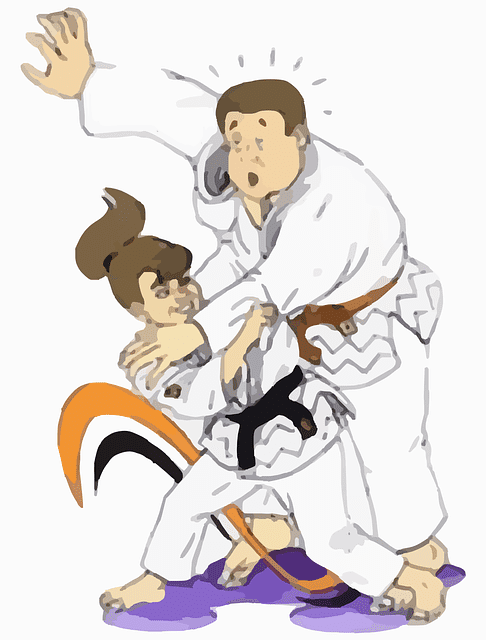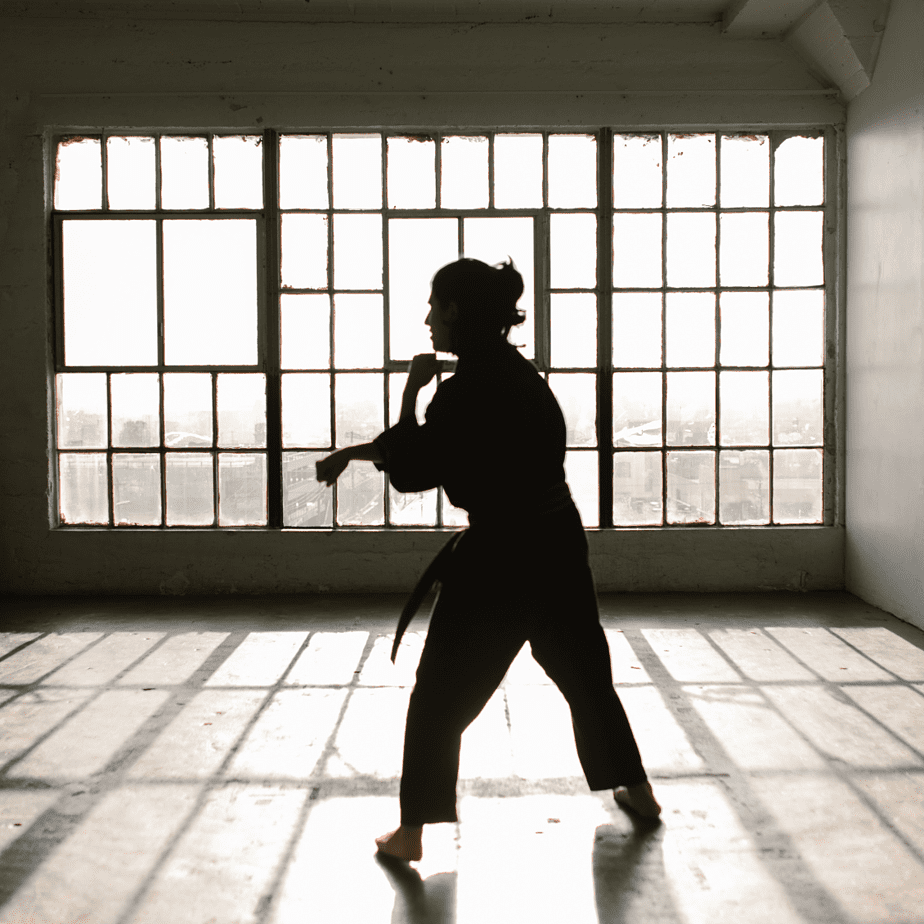There are two principal ways of training in the majority of Japanese martial arts – forms and free practice. In Judo, Kata practice refers to the formal system of prearranged drills (some even call them traditional Japanese art forms), while Randori practice is a “free practice”, or appliance of movements that are practiced freely in combat.
What Does Kata Mean?
Kata, or a “form”, means in martial arts the system of prearranged exercises that serve to help you get a higher ranking in martial arts techniques or simply to improve your skills and put them to the next level in your muscle memory.
What Is The Purpose Of A Kata?
Kata practice focuses on maximal contraction before the motion and accurate technique. You must keep those two while you practice kata or your martial arts workout is going to be pointless.
Slow motion matters, especially when you’re trying to perform kata for the first time. Katas can also serve for efficient self defense but it’s all based on solo practice and boosting your own skill set.
Katas Of Judo
Since professor Jigoro Kano created this martial art in 1882, there were many changes and adjustments. Yet, nowadays, Judo techniques are actually a part of many katas. In Japanese martial arts, katas play a vital role in the early stages of your career before you master the movements.
But unlike Karate kata, Judo techniques are mostly based on grappling, close combat, and hard-to-master martial arts techniques.
How Many Katas Are In Judo?
There are nine techniques in the Kodokan Judo Kata system that are widely adopted:
- Nage No Kata – forms of throwing – chosen from each of five Nage Waza (throwing techniques) – Ashi Waza, Te Waza, Koshi Waza, Ma Sutemi Waza, and Yoko Sutemi Waza.
- Katame No Kata – forms of grappling and holding, five model techniques are chosen from three Katame Waza: Osaekomi Waza, Kansetsu Waza, and Shime Waza.
- Kime No Kata – defensive techniques forms, very important for a serious combative fight in martial arts, Kime No Kata contains 8 kneeling position techniques (Idori) and 12 standing position skills (Tachiai).
- Ju No Kata – forms of gentleness and flexibility, Ju No Kata refers to the gymnastic composition of defense and attack in a series of slow and moderate actions.
- Kodokan Goshin Jutsu – forms of Kodokan self defense – divided into a weapons section (9 techniques) and an unarmed section (twelve techniques of martial arts).
- Itsutsu No Kata – forms of “five” – this means five sequences of motions that express the power of nature artistically;
- Kodokan Koshiki No kata – forms of classics, the essence of defense and attack, Kito Ryu Jujutsu forms, Kano Shihan highly evaluated them – seven Ura (back) techniques and fourteen front (Omote) martial arts techniques. Koshiki No Kata is crucial for beginners.
- Seiryoku Zenyo Kokumin Taikuu – forms of maximum efficiency physical education – this sequence combines aspects of both attack and defense with physical education, 8 movements of solo kata training, and 9 motions of duo practice for martial arts;
Kodomo No Kata practice.
Nage Waza (Throwing Techniques)
Throwing is a very important part of Judo techniques – you can score the majority of points, even defeat your foe via ippon, so Judo training is mostly based around Nage Waza for those who want to take part in the competitions and pursue serious careers.
How many techniques are in Nage no Kata?
There are five techniques and tons of throws that fall under those groups in Kodokan Judo:
- Te Waza, or hand techniques – the ones where you effectively use your opponent’s hands/arms to perform a throw, is a very important area of practicing Judo for beginners.
- Koshi Waza, or hip techniques – representative techniques of throwing your enemy in a sudden motion where you use his hip as a fulcrum. Uki Goshi, or hip toss, is the most often move in competition from the Katame No Kata family. Harai Goshi will work in MMA combat too.
- Ashi Waza, or foot/leg techniques – motions that use your opponent’s leg or foot for sweeping, entangling, tripping, reaping…
- Ma Sutemi Waza – rear sacrificing techniques – moves when you drop yourself on your back to create a pendulum and throw your foe.
- Yoko Sutemi Waza – side sacrificing techniques – you drop on your flank to execute the throw.
Katame Waza (Grappling Techniques)
There are three big groups:
- Osaekomi Waza – hold down techniques, this group contains moves that help you control your foe on the ground and prevent him from escaping the position, it can bring victory in competitions under the banner of the International Judo Federation if you hold for 20 seconds.
- Shime Waza – choking techniques – moves where you train choking your opponent with or without the gi.
- Kansetsu Waza – joint locks – consists of using someone’s legs, knees, arms, etc. where you bend his/her limb in the reverse direction and force him to surrender or tap.
Ate Waza (Striking Techniques)
Ate Waza is not used in competition due to its hazardous nature, but traditional Judo offers striking.
This area of Kodokan Judo contains all kinds of striking maneuvers where you target the vital areas of your foe’s body with your fingers, palm, and the edge of your hand, foot, knee, or elbow. If you’re interested in self defense techniques, Ate Waza might contain some of the most effective skill sets in martial arts.
Which Is The Hardest Kata?

Take a look at this instructional video below, it will help you visualize. The hardest kata is the one you evade most, every kata is difficult in its own way.
Yet, according to forums, many consider Kanku Dai the most difficult Kata in a discipline invented by Jigoro Kano. Unlike Karate Kata, which is mostly based on strikes, Judo is so complex, timing, and a good partner are everything.
The Dynamic Nature of Judo Kata
Katas are made of the movements you can use in Randori, but Randori moves cannot be used in every single kata. The first two katas are taught and learned and are typically called Randori No Kata. The first two are called Nage No Kata (a form of throwing) and Katame No Kata (a form of grappling).
In the modern Judo world, there are so many kata forms, and we will mention some of them – Ju No Kata (a form of gentleness and suppleness), Kime No Kata (a sort of decision), Koshiki No Kata (a form of ancient), Kodokan Goshin Jitsu, Seiryoku Zenyo Kokumin Taiiku No Kata (old one, the principle of maximum efficiency), The Joshi Goshinho and The Kime Shiki (not treated as kata today), Renkoho (modern method for law enforcement officers), Itsutsu No Kata (The Form Of Five).
There is also a sort of Kata form that is not recognized today by dojos, for example, Go no Kata (Kata of Hardness), Ippon Yo Goshin Jutsu no Kata, Gonosen no Kata, etc.
Jigoro Kano brought the idea of kata because of the concept that exists in the koryu, as kata used to be the centerpiece of the old ryu, but the old ryu had no randori of any kind.
As time went by, the sport was getting more and more limits and rules, so many ancient moves were prohibited. Nowadays, some dojos don’t even teach katas and instantly start with preparing fighters for combats and competitions.
Unofficial (But Very Helpful) Judge’s Guides, With Diagrams Of Start And End Positions
These manuals could come in handy for Judo kata competitions and forms. The criteria for evaluation have changed as the sport evolved, so please take a look at the Kata manual from January 2022. The United States of America has fully adopted International Judo Federation standards, but other states are working on it too.
Judo Styles Per Country
Judo is a truly international sport with more than 50 million practitioners, but there are many differences between the states. We will take a look at the most eye-catching details from the most popular Judo areas.
Japanese Judo
I like to call this International Judo federation style. The Japanese version is widely accepted in World Championships and competitions, you are not allowed to grab under the belt or shoot in for a takedown under the level of the hip.
It is famous for fast, and explosive techniques, and an extensive use of lapel and sleeve grips. Position, speed, timing, balance, and leverage are everything.
Korean Judo
Very technical variation of Judo, but Korean competitors are mostly faster than the rest of the world. You’ll see tons of dropping techniques and some modified versions of Japanese throws, for example, reverse Seoi Nage.
Russian Judo
Strong, powerful style with many unorthodox techniques, and a lot of hip throws. Once a master of Russian Judo gets a hold of you, he’ll never let you go.
It is heavily influenced by Sambo, plus Russian Judokas are very powerful with counters, so they can finish you with Ippon from almost every grip.
French Judo
The best western Judo state with so many Olympic and World champions for a reason. French fighters are very tactical, focused on breaking the opponent’s posture, and their timing rocks. Teddy Rinner is the perfect example of the syntax above.
Mongolian Judo
A very unconventional martial art that is heavily influenced by Bokh (traditional Mongolian jacket wrestling), so you will notice tons of weird grips and their fighters rather focus on power, strength, and strong finish, they don’t put the technique to the fore.
Their trademark is Yagura Nage, also known as front Uchi Mata, a modified technique that surprises even the greatest masters of the sport.
Georgian Judo
Georgian Judo is heavily influenced by their national martial art Chidaoba (Georgian jacket wrestling), so you will see a lot of modified wrestling techniques in the repertoire of Georgian athletes.
There are tons of unorthodox grips, throws, takedowns, and counters. Before grabbing under the belt was prohibited, the Olympic medalist Shota Karabeli made a mess with the popular knee lift throw (Yagura Nage), which is still a trademark of good old times when Georgians were piecing everybody up on the mats.
Judo Kata frequently asked questions
Are There Forms In Judo?
Of course, there are Katas, and even Kata competitions exist, it is an awesome way for competitors to artistically express themselves.
But you are not going to see a Kata in the majority of the official big events. But if somebody says there is no Kata in Judo, you’ll know that he’s making a horrible mistake. Forms express techniques and fighters at the same time.
What Are The Different Types Of Judo?
Thanks to the International Judo Federation and Kodokan, Judo remained largely unified martial art. But there are a few styles of Judo that grew under their own rules – modern Olympic Judo, Kosen Judo, and Sambo.
Even “old” jujitsu is considered a variation of traditional Judo, despite it having an unarmed section and a weapons section too.
Is Judo Kata In The Olympics?
Unfortunately, no, there are no Judo katas in the Olympic Games. Yes, Judo is an Olympic sport practiced all around the globe, but there is only a combative fight according to a specific rule set (Randori).
What Is A Kata Competition?
In general, Kata practice means performing sequences of specific moves that target a virtual foe. It is combat with an imaginary enemy, where you both counter and attacks his/her movements via representative techniques.
That’s the definition of Karate kata, but you can apply it to all other sports where you practice kata forms.

